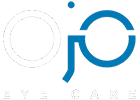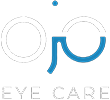At OJO Eye Care, we pride ourselves on providing quality, personalized eye care for patients of all ages. Our routine eye examinations include some universal tests, but there are some additional ones that we may perform depending on age:
Age 0-5: In pediatric patients, it is important to make sure their quality of vision is adequate for their age and that they have good ocular mobility and alignment. Early examination helps us to detect and treat “lazy eye” which can cause permanent vision reduction if left untreated.
These patients are too young to give subjective feedback on their vision, so we rely on special tests to verify their glasses prescription. This can be accomplished through the use of an autorefractor, which is an instrument that takes a reading into the eye to estimate the prescription. In many cases, this test will be performed before and after the use of a dilation drop, which relaxes the muscles of the eye and provides a more accurate reading.
Alternatively, if the patient is still too young for the autorefractor (typically under 3), we may need to perform retinoscopy, which is a technique that uses handheld lenses and a special light to verify the prescription. (In case you’ve ever seen an infant wearing glasses and wondered how doctors decided they needed them, this is how we know!)
Age 5-18: Young children may also require an autorefraction reading to verify their prescription, depending on their level of cooperation and comprehension. Within this age range, we also want to test for depth perception and color vision. This is easily performed in a few minutes by using specially designed books and charts.
Patients in this age range grow quickly, which can cause large shifts in their prescription. Therefore, it is important to prescribe an updated prescription every year. This is accomplished by using a phoropter, which is an instrument used to view the eye chart as we manually test different lens combinations to find the clearest vision. (This process is called refraction.)
Age 18-35: There are typically minor changes in prescription within this age range, however we still want to perform refraction to verify. This is the most common time for refractive surgery, such as LASIK or PRK, which may require some additional testing for referral such as topography (a digital map of the front surface of the eye).
Age 35-50: Around age 40, the muscle inside of the eye begins to weaken, making it harder to see near objects. Within this age range, we will begin to check every patient’snear visual capabilities to determine their need for reading glasses, bifocal glasses or multifocal contact lenses.
Age 50+: Although we monitor for ocular diseases in every patient, those over the age of 50 are more likely to develop them, making medical testing imperative for this age range. Depending on our findings, they may have to have additional testing performed such as visual field mapping or OCT imaging. These patients are also more likely to require referral to an ophthalmologist for advanced treatment or surgery.
Regardless of your age, our office is prepared with the most state of the art equipment to provide you with a thorough eye exam that is tailored just for you! Give us a call today to schedule an appointment, we look forward to seeing you!


